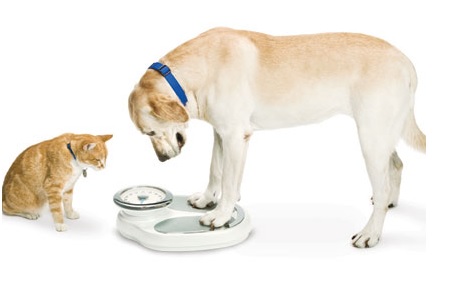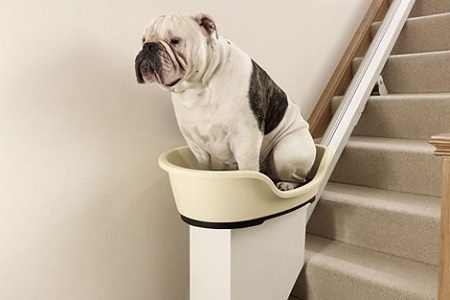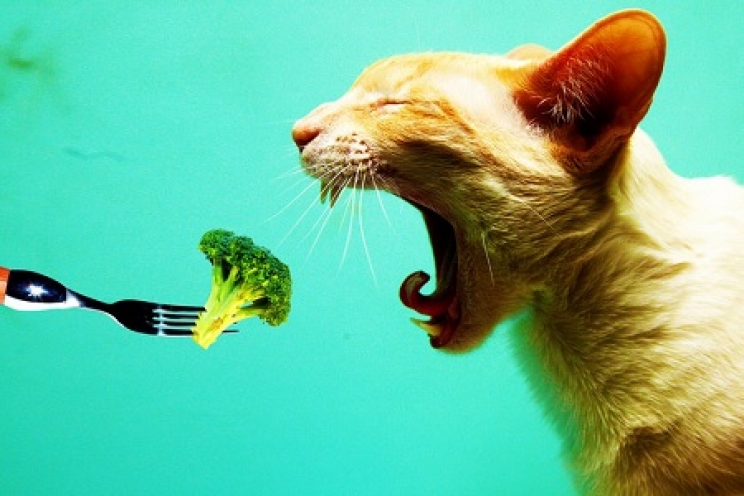Everyone needs work hard to eliminate extra pounds. Even our four-legged friends, in fact, there are more and more overweight or even obese dogs worldwide. This is certainly not good for their health, so it is important to know how to make your dog and cat eat well to help them lose weight.
Overweight and obesity: what are they?
When we talk about these two phenomena, we are referring essentially to weight gain beyond the ideal value, which is calculated based on the sex, age, size, lifestyle and other individual factors of the animal.
Why do they become fat?
The answer is quite simple: you get fat when you eat more than you consume. This means that a man used to eating pizza and chips every evening, and then abandoning himself on a sofa all day, will certainly weigh more than a sportsman who feeds in the same way, but runs at least an hour a day.

For our animals, the situation is quite similar. It is estimated that the energy requirement (i.e. the amount of daily calories we need for all activities) of an adult cat weighing 5 kg is equal to 300-350 kcal if it is active, whilst it drops to 250 kcal if it carries a sedentary lifestyle. Of course, the needs increases in kittens and in pregnant or lactating cats.
Clearly, it all depends on the type of food we offer him, the quantity and the lifestyle. In any case, there are health conditions that can affect weight, in particular some hormonal imbalances.
In addition, some breeds tend to gain weight more easily, such as Labrador, Cocker Spaniel, Dachshunds (also known as “sausage dog”), Basset Hound and Beagle.
What about castration / sterilization? In these cases there are no actual data linking the weight gain to the surgery. It is mostly an owner's attitude, which tends to feed the dog or cat more often.
In the long run, the consequences of obesity can manifest themselves with conditions and diseases that can be quite serious. We refer to:
- Diabetes
- Cardiovascular diseases
- Joint problem
- Liver problems
- Hormonal alterations
The correct diet to promote weight loss
We must change the animal’s diet to a healthier one. These are a few tips:
-
Change food: a low-calorie food will be needed, which will still be able to provide the right amount of protein, vitamins and mineral salts essential for the animal. All these foods (if you choose a commercial product) are very rich in fibre, which stimulate the sense of satiety, reduce the absorption of sugars and promote the proper functioning of the intestine;
-
Avoid do-it-yourself: an excellent quality industrial food represents a balanced meal. By choosing a home diet, however, you would risk unpleasant results, unless you turn to an expert veterinary nutritionist, to scrupulously follow you throughout the preparation of the diet,

- Moist food is better: remember to alternate low-calorie croquettes with their wet variant, which contains a greater quantity of water than dry foods. Always follow the vet's directions;
-
Do everything gradually: remember that we are not in a military training camp. Allow the animal time to gradually try out the new foods, reducing its doses little by little. The ideal would be to reach the new diet in about 6—7 days;
-
More meals per day: if you are used to feeding the dog only once a day, you will have to change this rhythm, dividing the same total amount of food for the whole day into 3 meals;
-
The differences with cats: cats at home do not have the same eating habits as dog, they are used to always having a bowl of croquettes available to eat several times throughout the day. Fasting, especially in cats, can create serious consequences. In these cases, a low-calorie food diet must be administered, preferable in the commercial version "obesity", rather than "light";
-
Bring timer bowls: there are special bowls equipped with a timer on the market. Food is hidden most of the time, but is shown to the animal on a regular basis, based on the time we set. These are ideal for the cat.
-
It is forbidden to feed the dog and cat at the dining table: reaching out to give some of our food to the animal while eating is absolutely forbidden. Rather, close the dining room door during meals, to avoid witnessing the dog's sweet eyes or the cat's raids;
-
Avoid snacks and biscuits: they are too caloric and are often used as random gratification, without an apparent reason. Their purpose, in fact, is to reward the dog and cat especially during the educational path. If you are still in this phase, choose rather specific products for the maintenance of body weight or go for small pieces of unseasoned chicken or fruit.
It is clear that nutrition is one of the first things that needs to be questioned. In any case, a lot of attention must be paid to their lifestyle, making sure that the animal is able play, walk and run more. Sedentariness, in fact, is the enemy of physical and mental health.










